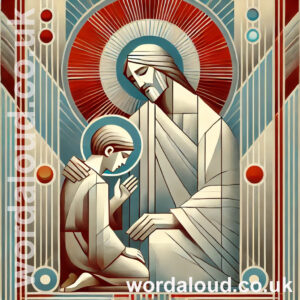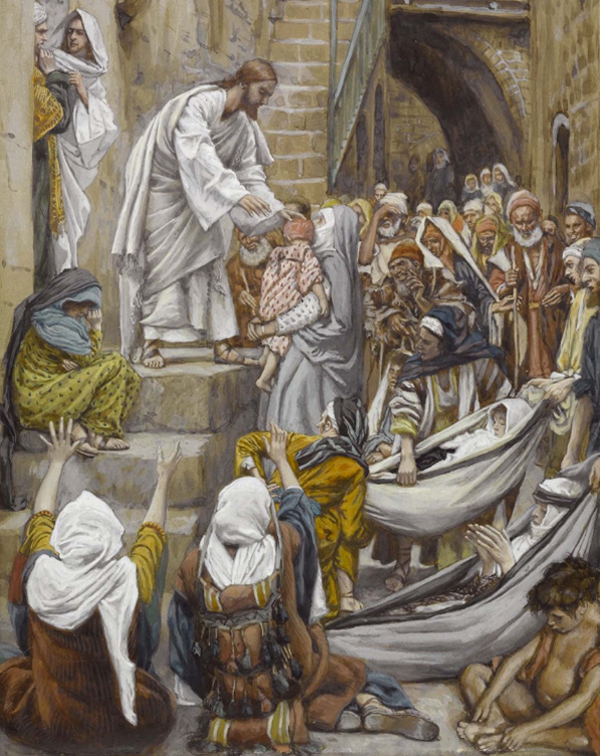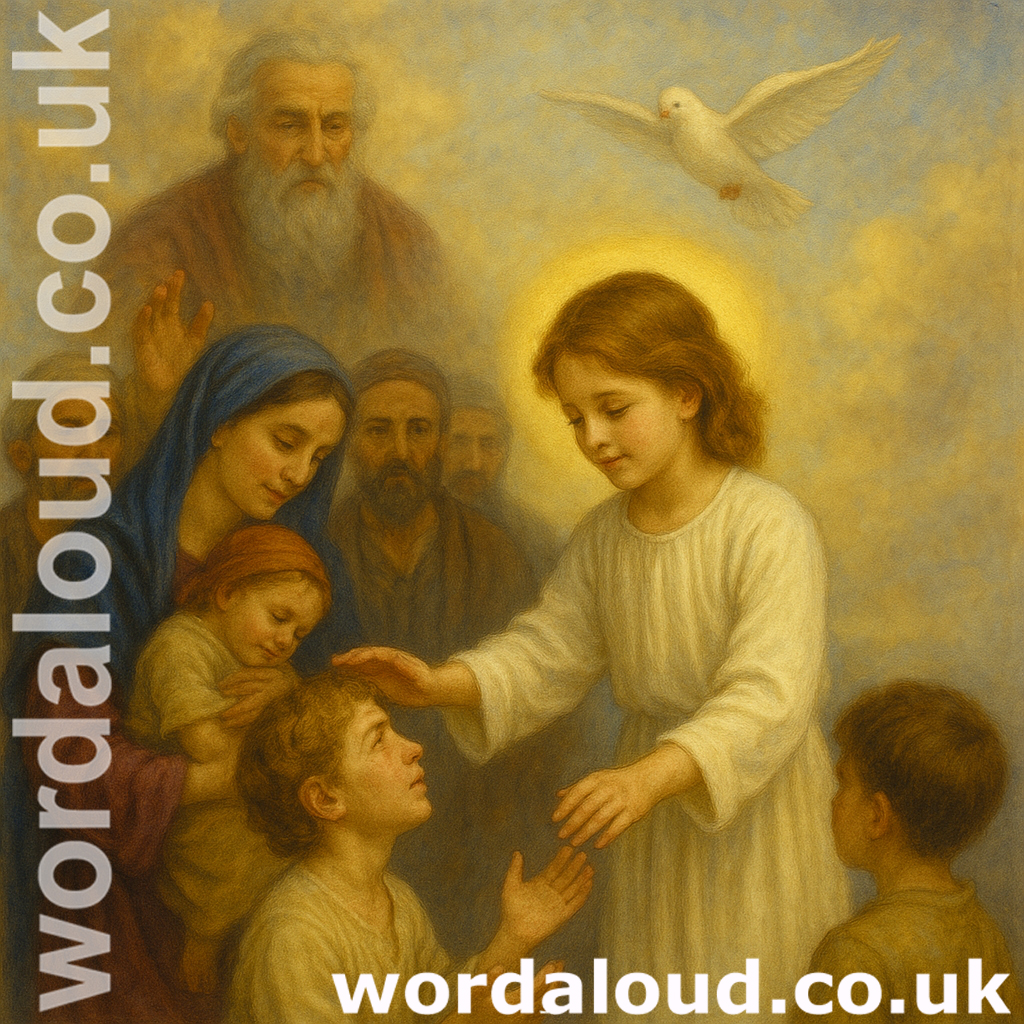Christian Art | Jesus’ Healing Miracles
Mark 1: 29-39 – 5th Sunday Year B – also Week 1, Wednesday (King James Audio Bible KJV)
29 And forthwith, when they were come out of the synagogue, they entered into the house of Simon and Andrew, with James and John.
30 But Simon’s wife’s mother lay sick of a fever, and anon they tell him of her.
31 And he came and took her by the hand, and lifted her up; and immediately the fever left her, and she ministered unto them.
32 And at even, when the sun did set, they brought unto him all that were diseased, and them that were possessed with devils.
33 And all the city was gathered together at the door.
34 And he healed many that were sick of divers diseases, and cast out many devils; and suffered not the devils to speak, because they knew him.
35 And in the morning, rising up a great while before day, he went out, and departed into a solitary place, and there prayed.
36 And Simon and they that were with him followed after him.
37 And when they had found him, they said unto him, All men seek for thee.
38 And he said unto them, Let us go into the next towns, that I may preach there also: for therefore came I forth.
39 And he preached in their synagogues throughout all Galilee, and cast out devils.
Christ continues his work of healing and exorcism. He passes from the synagogue, a Jewish meeting place for prayer and for reading of the Scriptures, to enter into the home of Simon and Andrew. The Bible tells us that Jesus spends much of his time preaching in synagogues. Later, during his Passion, Jesus will tell Pilate that he has always taught openly in synagogues. There is indeed a great openness to Jesus’ teaching. Many are called, here in a space which would be at the spiritual heart of local Jewish communities. Similarly, we are called as followers of Christ to spread the good news. Our openness with our love of Christ reflects Christ’s openness to the people of Galilee and to us.
Simon and Andrew have welcomed Jesus into their home. There, in an intimate part of the home, the bedroom of Simon’s mother-in-law, Jesus heals. He is told straightaway of the fever, and the act of healing is similarly immediate. So we are asked to admit Christ into our home, our lives, our innermost thoughts, including the most intimate and hidden-away, the deepest parts of ourselves. The fever may be understood to represent our sins burning within us. It can take great humility to admit Christ into the heart of us, to confess our sins with Jesus, and so be healed.
Christ’s fame has spread extraordinarily rapidly. People are clambering to meet him. It seems there so much sickness and evil in the land, craving healing, forgiveness, release from evil powers. For so long, the coming of Jesus Christ the Messiah has truly been longed for. The whole city is gathered together about the door. Christ is unperturbed. Through his infinite love and mercy he heals those who come to him. Christ has time for everyone. And the demons once more know that Christ is the Son of God, but he will not permit them to speak, it has been said because he did not wish to accept, in support of the truth of his divinity, the testimony of him who is the father of lies.
Christ’s prayer is an example to us all of the relationship we should develop between ourselves and the Father. As we hear the Bible we place ourselves in close communion with the word of God. As we pray we cultivate our conversation with God. It is of enormous significance that in doing so we are following Christ’s example. Christ himself prays. He is with us in our relationship with God the Father. The Bible tells us Christ prays at some of the most important moments in his life, for example, his baptism, the choosing of the twelve, the miracle of the loaves, the transfiguration, and in the garden of Gethsemane. When we pray the Our Father, the Lord’s Prayer, this is the prayer which Christ gave to us.
Christ’s prayer and his ministry are inextricably linked. His prayer informs his ministry. Again, this is a guidance to us all. He takes himself apart to pray, just as he went into the wilderness for forty days. Christ too needs his alone-time with his Father. In these verses of the Bible, the time of Christ’s prayer is also significant. He arises well before dawn – we may think now of the office of Vigils – and so his prayer dispels the darkness of the night and anticipates sunrise and the new day.
And so following prayer, Christ declares his ministry, telling Simon and his others followers that it is time to travel the neighbouring towns and thence through all Galilee. He will preach – in the synagogues – and heal people, casting out demons. There will such an outpouring of faith in this land. And to this day, our faith, the Church, the Bible, the Word of God, continue to exhort all Christians to witness Christ’s ministry and to proclaim the good news of salvation through Christ our Lord.
Jesus often went off to a lonely place to pray. Yet the same Jesus who prayed in lonely places said, ‘When you pray, go into your room and pray to your Father in secret.’ This means that the lonely place is not necessarily a place far away, or that by ‘room’ he means four walls that separate us physically from others. The room is the room of our utmost heart. This room is with us at all times. We should make it a place to which we can go to find rest and spiritual recovery when the world is too much with us. Then we will discover that the inner room is occupied by the God of love who dwells in us all.
![]()

![]()








